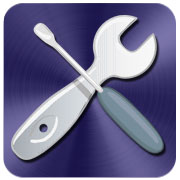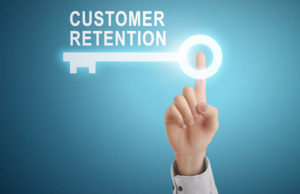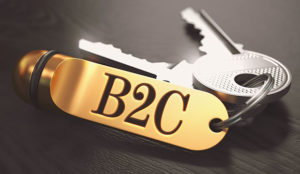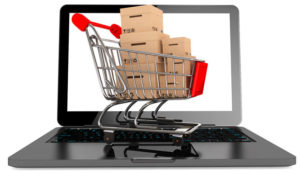
This story was originally published on Jun. 7, 2012, and is brought to you today as part of our Best of ECT News series.
There’s a lot of opportunity for CRM vendors seeking to reach small businesses.While there are 15 million seats of CRM in action today, there are a lot more than15 million customer-facing workers out there, and the vast majority of them are insmall businesses.
That’s a big opportunity for CRM vendors — but what does it mean for potential CRMusers? You’d think I’d be advocating that if you’re a small business owner who’s notyet using CRM, you immediately take to the Internet and buy an application straightaway. Go! Now!
Well, hold it — I’m not advocating that. In fact, I think that getting CRM too early isexactly the wrong thing to do — and it can inflict the same kinds of negative impacts onyour business as getting CRM too late.
Even CRM guru Paul Greenberg admitted he doesn’t use a CRM application — and thatshould tell you something.
You may not be ready for CRM, or your business may notrequire it. If that’s the case, investing in CRM will be a waste of money and effort, and itcan keep you from doing the things that will grow your business.
So, are you ready for CRM?
Here are five indicators that can help tip you over the edge and toward a CRMapplication:
1. Lost Sales
Every company loses in the selling process — if that weren’t the case, selling wouldbe easy. But when you never get into the sale because lead information is misplaced,or when you fail to follow up because of disorganization, or when your sales peopleare spending more time updating and managing Excel spreadsheets than they areselling, then it’s time to move toward CRM.
At its most basic level, CRM is a place forthat data to go, allowing you to collect it, store it, and use it as the basis for alertsand future sales activities.
It also allows you rapid access to collateral materialswhen they’re needed and gives the sales manager the opportunity to understandwhere sales may be going wrong and react to remedy the situation. It’s hard to do allthat with a purely manual, spreadsheet-based approach.
2. Existing Customer Exodus
CRM is useful in gaining new customers, but it’s even more valuable when it comesto keeping existing customers. If you start losing them because of failures to followup — especially with customers who order on a regular basis — it’s time to introducesome automation into your sales operations.
Worse yet is what happens when youtry to retain too much personal and relationship information about your customersin your head. Some people are great at it, but even they will start to forget orconfuse data when it starts to add up.
This puts you at risk of sending the signalto your customer that, despite their past business, you really don’t know them aswell as you ought to. If you forget important details of your relationship with acustomer, why should that customer believe that you’re any different from any ofyour competitors?
3. Lost Control of the Data That Describes Why Things Happen
It’s useful to understand the patterns of successful, closed sales: What did you dothat moved the customer closer to a buying decision? But when you can’t discoverbest practices in the sales process, you have a problem.
In order to be productive,your sales people need to do the things that work, and they need to repeat them. Ifsomething is demonstrably effective in closing a sale, then it should be discoveredand shared — and, even in the case where there’s one sales person, it should beidentified and utilized.
If your selling process has become complex enough thatthese processes and best practices are no longer easily identified — and if that failureto spot these processes begins to result in lost sales — it’s time to look at CRM.
4. Customer Data Becomes Too Difficult to Manage Manually
The longer you have customers, the more you know about them — their buyingpatterns, their payment terms, the things they respond to and the personalinformation they’ve shared with you.
Those things all become important parts ofyour relationship with them. But you can’t expect to carry this detail in your heads;anthropological study revealed the Dunbar number — or the number of people withwhom you can have a meaningful relationship — ranges from 150 to 210.
If you omityour family members, friends and coworkers, how much space is there left in yourhead for information about customers? When you start to have large numbers ofcustomers, or you start to value large volumes of data about your customers, it’sprobably time to move to CRM.
5. Data Becomes Crucial to Multiple Parts of the Business
It’s not uncommon for customers to suggest features or future products they’d liketo see during sales calls. But is it possible for sales people to do the work on theirown to get this information back to the right person in their companies? And whosejob is it to spot sales spikes and report them to manufacturing? And what happenswhen an unexpected audience for a product suddenly develops — does someone tellmarketing?
These are just a few scenarios in which data that sales may see first willremain trapped within sales unless there’s a system in place to share information.
Sales can be a window to the outside world for the rest of the company, so siloingthis kind of data within the sales department is the same thing as discarding itunless you have a mechanism for sharing it internally. That shouldn’t mean salesbubbling it up — it should mean having a system in place so marketing, support,manufacturing and other parts of the business can find that information.
If any of these scenarios resonates with you, it may be time to look for a CRMsolution. Implementing CRM may seem like a challenge, but if you’re losing sales,efficiency is suffering, and opportunities are going unclaimed, trying to continue tolive with your sales processes the way they are could be the real challenge.























































